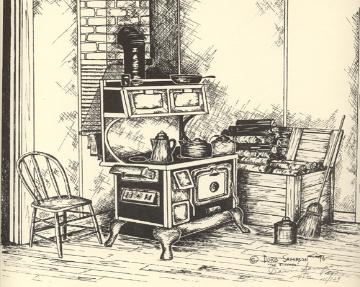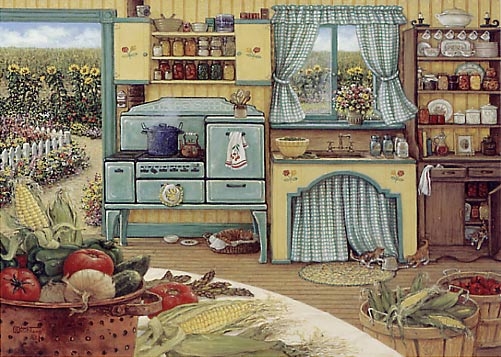
| Yesterday's Kitchen |
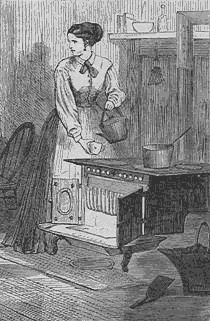
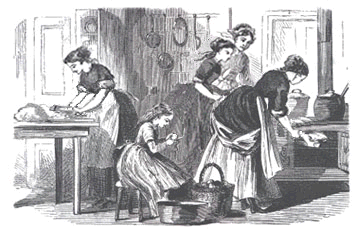
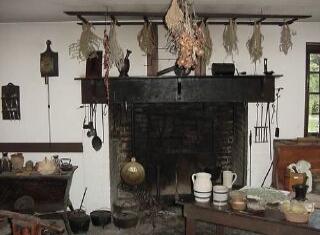

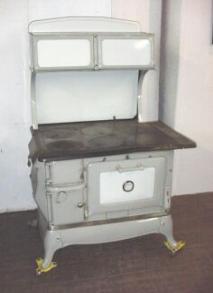
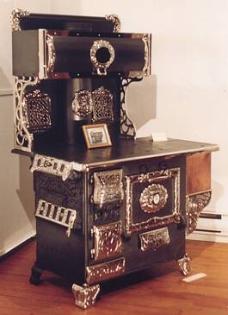
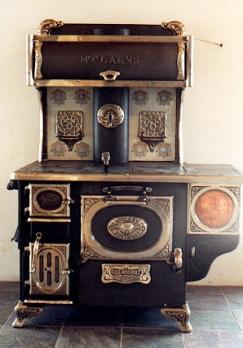
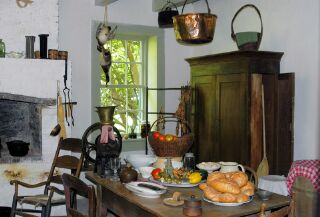
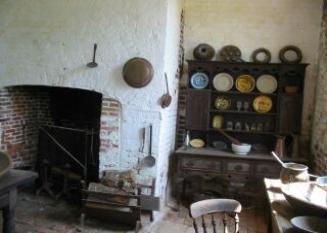
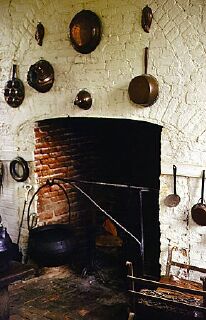

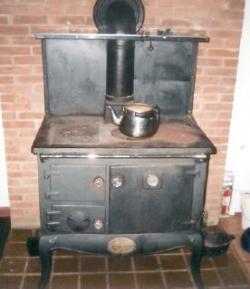
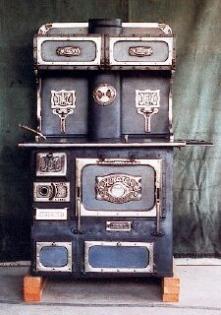
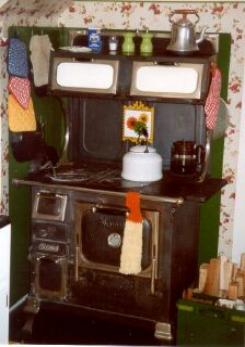
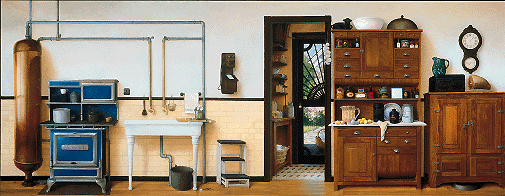
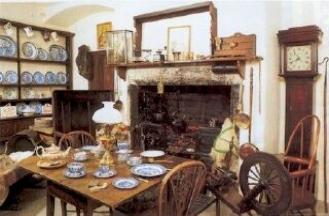
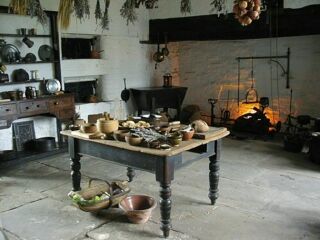
| I collect cookbooks and I'm especially fond of old cookbooks. My favorite is a 1916 book published by the New Orleans Times-Picayune newspaper, titled, "The Picayune Creole Cookbook." Besides the recipes, there's a chapter on the customs of "old New Orleans" I love. Many of the old cookbooks give us more than just recipes - they, also, give us a rare glimpse into the lives of our ancestors...what their favorite foods were and how they went about preparing them; what they kept in the pantry; their attitudes about food and health; what sort of recipes they used for the "sick room," holiday customs, etc. This page provides insight into cooking customs over the past two hundred years. |
| What's in the Pantry? 1860 - 1920 1860's New Foods: Canned pork and beans; canned soup; Tabasco Sauce; cold breakfast food; Folgers pre-roasted and ground coffee; Fleischmann's yeast New Companies: Arm and Hammer; Royal Baking Powder; Chase and Sanborn; Ghiardelli Chocolates; Nestle; Armour meat-packing factory New In the Food Industry: Pasteurization and sterilization by heat; mechanical refrigerator; tin can with key opener; thinner steel for cans 1870's New Foods: Cubed sugar; synthetic vanilla; root beer; Nestle's infant milk; chocolate cream soda; margarine produced commercially Not a food, but of use in the grocery...flat-bottom paper bags! New Companies: Lipton; Pillsbury; F & J Heinz; Quaker Mills; Hills Brothers New in the Food Industry: Milking machines; glass milk bottles; orange crates; pressure cooking; mechanical cream separator; William Underwood was the first to register U.S. food trademark. |
| 1880's New Foods: Malted milk; powdered pea soup; evaporated milk; Aunt Jemima pancake flour; Coca-Cola; Dr. Pepper; Thomas' English muffins; Oscar Mayer wieners; Tetley tea; Log Cabin syrup; Morton's salt; flaked cereal New Food Companies: McCormick Spices; Maxwell house; B. H. Kroger; White Lily Foods; Lever Brothers; Calumet Baking Powder; Pillsbury-Washburn Flour Mills New in the Food Industry: Packaging of grain commodities; aluminum production; ice-making plants replace ice-cutting industry; self-service restaurants 1890's New Foods: Minute Tapioca; condensed soup; Fig Newtons; canned pineapple; Knox's Gelatin; shredded wheat; Canada Dry ginger Ale; Grape Nuts; Cream of Wheat; Tootsie Rolls; Jell-o; Swans Down cake flour; Uneeda Biscuits; Pepsi-Cola; Wesson Oil; Cracker Jacks; bottled Coca-Cola; S & H Food Stamps; public school hot lunches New Food Companies: Quaker Oats; Beech-Nut; Beatrice Foods; National Biscuit; Baker's Coconut; Smucker Jams New in the Food Industry: Bottle-capping machine; automatic bottle-blowing machine; the Coca-Cola Company was bought for $2,300; first U.S. pizza parlor; Heinz became Heinz 57 with 57 varieties of products; Campbell adopts red & white labels---which were inspired by Cornell football uniforms. |
| Left: An ice house on a Georgia plantation, c. 1850 Above: A community ice house in NY, late 1700's |
| 1900's New Foods: Decaffeinated coffee; Hershey chocolate bars and kisses; Barnum Animal Crackers; canned tuna fish; ice cream cone; banana split; Ovaltine; Post Toasties; "hot dog" named New Food Companies: Battle Creek Toasted Corn Flakes; Sunshine Biscuits; Planters Nuts; Kraft New in the Food Industry: Coffee in vacuum tins; homogenized milk; soda fountains; coin-operated restaurants 1910's New Foods: Fortune cookie; Crisco; Mazola Oil; Hellmann's Blue Ribbon Mayonnaise; Domino Sugar; Ocean Spray Cranberry Sauce; Oreo Biscuits; Lorna Doone Cookies; Clark Bars; Peppermint Life Savers; Contadina canned tomato sauce; Malt-O-Meal; Old El Paso brand; "German" toast re-named "French" toast New Food Companies: Prince Macaroni; National Dairy; Birdseye; StarKist; Franco-American New in the Food Industry: Cakes wrapped in cellophane at bakery; Coca-Cola distinctive bottle shape; self-service grocery stores supermarket chain (Piggly-Wiggly); Fleischmann ad campaign to convince women to buy bakery-made bread |
| "The Good Housekeeper" by Sarah Josepha Hale, 1841 Foods for the sick: Gruel; Beef Tea; Barley Water; Arrow-root; Calf's Feet Jelly; Decoction of Liverwort; Wine Whey; Balm Tea "The Fannie Farmer Cookbook" - 1896 Foods for the sick: Clam Water; Oatmeal Water; Irish Moss Lemonade; Wheat Coffee; Arrow-root Gruel; Hominy Mush; Raw Beef "The Picayune Creole Cookbook" - 1916 Invalid Cookery: "It has not been thought necessary to add a chapter on "Invalid Cookery" in this book, as all Creoles know how to prepare dainty articles of diet for the sick. Never crowd a tray intended for an invalid. Spread a dainty napkin on the salver. Arrange the food in a most appetizing way, lay a rosebud or a flower fresh from the garden on the waiter and bring in the dainty, tempting morsel with a happy, cheery smile, though your heart may be sinking. The dish, in nine cases out of ten, will not fail to please, while your sunny smile will encourage the patient and make him feel that his recovery is certain. Then the battle is half-won." |
| Cooking Stoves, 1900 - 1923 |
| The link to this page is: http://www.thepastwhispers.com/Yesterdays_Kitchen.html Whispers - Home Old New Orleans Friday's Journal |
